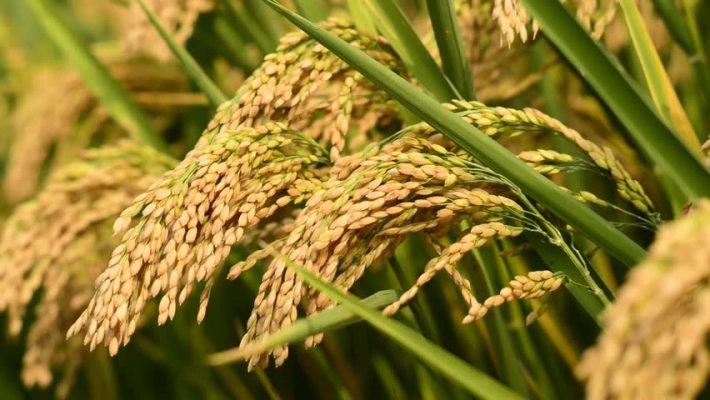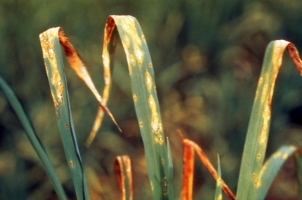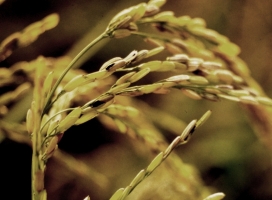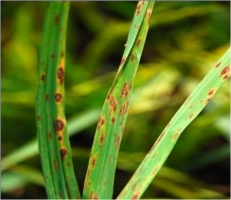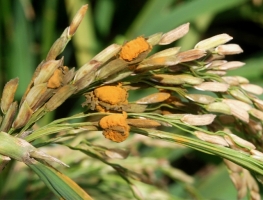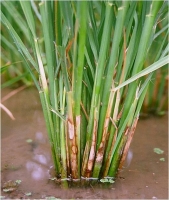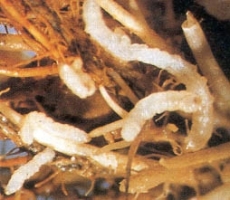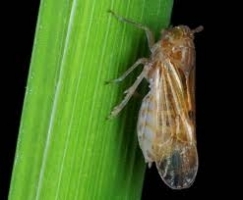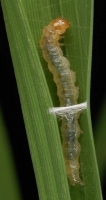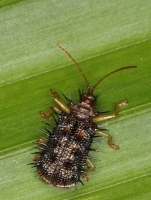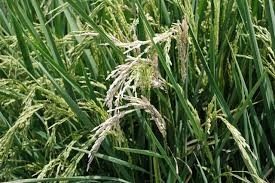Medium Duration Varieties
Jaya: Dwarf and high yielding varieties resistant to lodging. Ready to harvest in 142 days. Grains are big and long. Gives average yield of 26 qtl/acre.
PR 106: Dwarf and high yielding varieties resistant to lodging. Ready to harvest in 145 days. Grains are long, slender. Gives average yield of 24 qtl/acre.
HKR 120: Suitable for early sowing and in irrigated areas. Ready to harvest in 146 days. Gives average yield of 25 qtl/acre.
HKR 126: Suitable for early sowing and in irrigated areas. Ready to harvest in 140 days. Can survive in water stress conditions. Resistant to stem rot, blast and brown spot. Gives average yield of 27 qtl/acre.
HKR 127: Semi dwarf, medium duration variety suitable for normal planting. It is resistant to false smut. Gives average yield of 28 qtl/acre.
PR 113: It is short-statured, stiff strawed variety and its leaves are erect and dark green in color. It matures in 142 days. Grain are bold and heavy. It is resistant to bacterial leaf blight disease and gives average yield of 28 qtl/acre.
Pusa 44: It is susceptible to bacterial blight. Ready to harvest in 140-145 days. Gives average yield of 22-24 qtl/acre.
Haryana Shankar Dhan 1:Suitable for early planting. Ready to harvest in 139 days. It is resistant to stem and leaf borer. Gives average yield of 30 qtl/acre.
Basmati Varieties
Taraori Basmati: Suitable for early planting under irrigated conditions. Ready to harvest in 145 to 155 days. Gives average yield of 10 qtl/acre.
Haryana Basmati no 1: Semi dwarf variety, suitable for irrigated areas. Ready to harvest in 140 days. Gives average yield of 16 qtl/acre.
Pusa Basmati 1121, Pusa Basmati 1, CSR 30, Shabnam,Pusa Basmati 1509.
Other states variety
Hybrid 6201: Suitable for irrigated areas. It gives resistance to blast. It is average yield of 25 qtl/acre.
Vivek Dhan 62: Suitable for hilly and irrigated areas. Its grains are short bold. It is resistant to blast. Neck blast and it can survive in low temperature areas. It gives average yield of 19 qtl/acre.
Karnataka Rice Hybrid 2: Suitable for irrigated and timely sown areas. It is tolerant to leaf blight and other disease. It gives average yield of 35 qtl/acre.
Kanak: Suitable for medium land sowing. Its grains are long and bold. It is resistant to bacterial blight. It gives average yield of 18 qtl/acre.
Ratnagiri 1 and 2: Ratnagiri one suitable for irrigated areas while Ratnagiri 2 suitable for low land areas. These are semi dwarf varieties and give average yield of 19 qtl/acre and 21 qtl/acre respectively.

